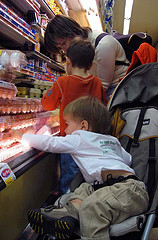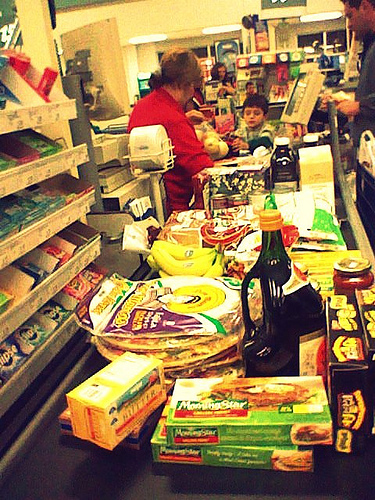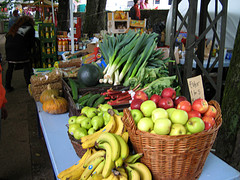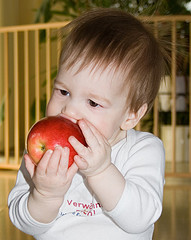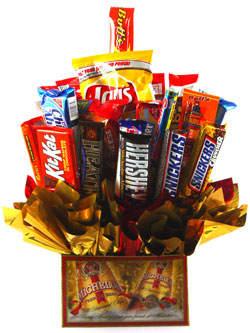
We all know that fruit is the best thing to give our kids. Luckily my three kids love the stuff, although they have varying tastes (my girl loves pineapple, the boys don’t!). Bananas, apples and oranges are the most popular, and so are mangoes. Just yesterday, even baby Wills joined in by wolfing down half a mango in record time.
I’m not really a fan of frozen or canned fruit, but I do buy those mandarin oranges in plastic containers as my son likes to take it to school. Fresh is the best way to go I say, and organic if you can. If you can’t, make sure to wash the fruit with a natural “fruit and veggie” wash and peel it well.
I have to admit though that if I have to buy fruit at the supermarket, I sometimes have difficulty discerning which fruit is good, which isn’t. Isn’t it annoying when you buy a melon that looks perfectly decent, you open it up and it turns out to be tasteless or worse, sour?
Here’s some good advice I found:
Apples: Look for firmness. Brown or tan “scald” marks don’t affect taste, but soft bruises that are discolored indicate damage.
• Avocados: Available year-round, as they are grown in Florida and California. Choose slightly soft fruit, or if bought unripe, allow three to five days at room temperature to ripen. Refrigeration slows ripening.
• Bananas: Best eaten when yellow with brown speckles. Bananas get damaged below 55 degrees Fahrenheit, so never refrigerate.
• Blueberries: In season from May to September. Look for uniform color and plumpness; avoid oozing berries.
• Grapefruit: This fruit is sold ready-to-eat; avoid fruit that is too soft (a sign of decay). Scratches and spots on the peel don’t usually indicate that anything’s wrong.
• Grapes: Select those with green, pliable stems that the grapes don’t fall off of easily — a sign that the grapes themselves are fresh.
• Kiwi: It’s ripe when it yields to the touch but doesn’t leave indentations.
• Melons: A stem that’s still attached may indicate the fruit isn’t ripe. With cantaloupe, avoid those with an overly yellow color and a soft skin, which indicates overripeness. Sniff for a sweet, pleasing smell. Most cantaloupes require two to four days to ripen at room temperature at home.
• Oranges: Should be heavy, indicating juiciness. Brown mottles on Florida or Texas oranges are common and don’t affect flavor.
• Peaches: In season from May to September. Very hard peaches are unlikely to ripen. Choose freestone varieties for eating.
• Pears: Should be firm but slightly soft. Their color depends on the type: Bartletts should be pale to rich yellow, while Boscs are brownish yellow. Shriveled pears will not ripen.
• Raspberries: Stains on the container may indicate mushy or moldy berries inside. Berries should not have their caps attached.
• Strawberries: In peak supply in May and June. Look for the cap stem still attached, and avoid fruit with white shoulders or large discolored patches.
Photo via plumandjello
Originally posted on August 24, 2011 @ 7:31 am
